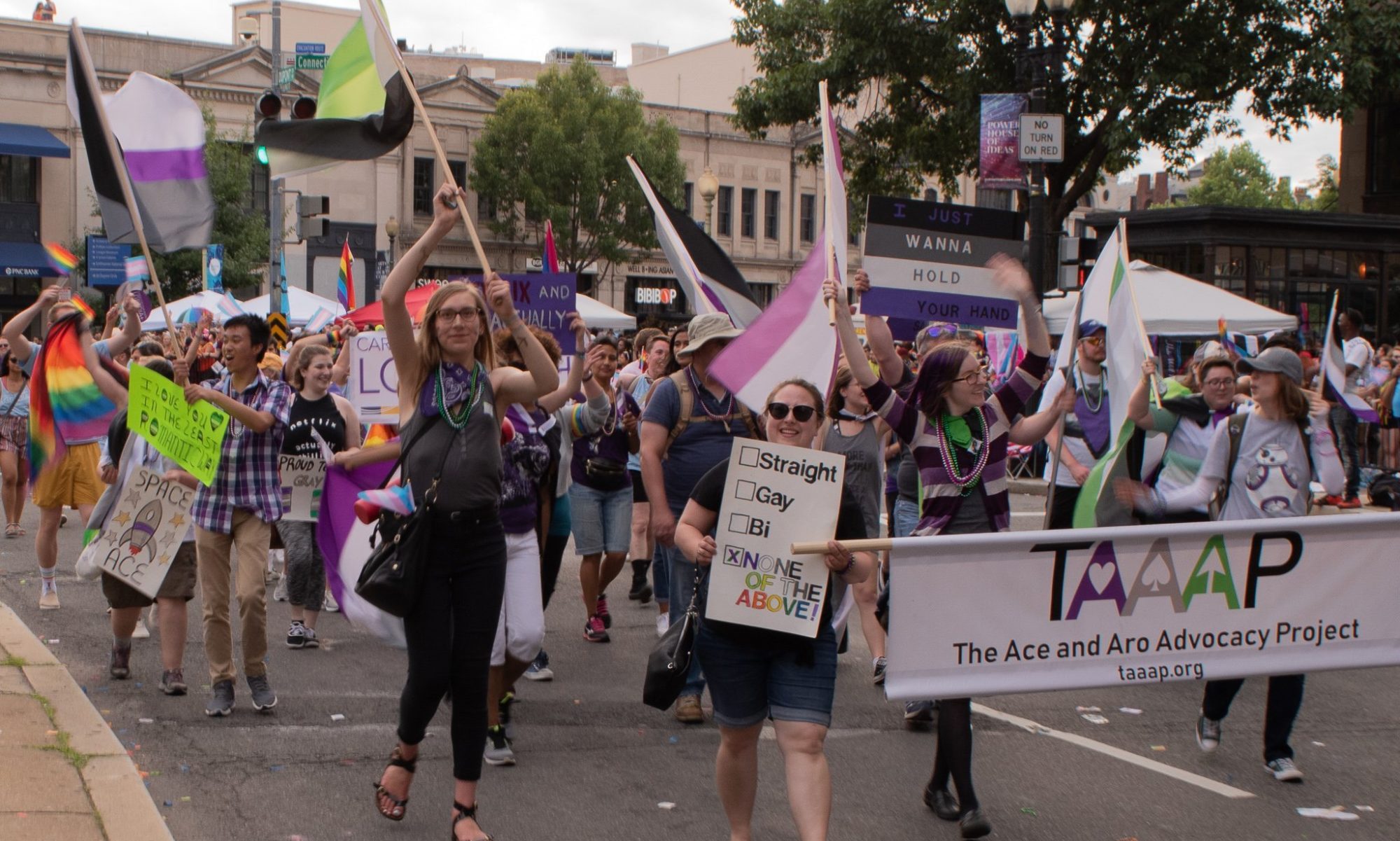This post is TAAAP’s submission to the February 2019 Carnival of Aros/Carnival of Aces, which we are hosting. Read our call for submissions here.
The Ace and Aro Advocacy Project was founded about a year and a half ago as The Asexual Awareness Project. Our mission, which started as a simple desire to have aces march at pride and to help aces gain recognition at the Creating Change conference, expanded organically over time. One of the ways it expanded was to include aromanticism fully and equally alongside asexuality.
Currently, TAAAP mainly consists of a bunch of aces. Many of us are aro in addition to being ace, but we have also historically prioritized our ace identities over our aro ones. The fact that we started as a specifically asexual organization is perhaps the strongest evidence of that. We are still working to ensure that aromanticism is equally represented as asexuality in all of our outreach and projects, and we know we sometimes fall short. We hope to be able to include more allosexual aromantic people, as well as more aroaces who prioritize their aro identities.
The subject of how much aces—particularly those who are not aro, and those who prioritize their ace identity over their aro one—should do to further aro advocacy is a frequently discussed topic right now. There are people who feel that aces haven’t done enough for aros. On the other hand, there are others who have a deep mistrust of anything connected to the ace community, and don’t want aces to advocate for aros.
As an organization that frequently works on joint ace and aro advocacy projects, we would like to give our perspective on when these combined efforts are useful and feasible, and when they are not.
At TAAAP, we focus on helping people and organizations (particularly LGBTQ+ organizations) better include aces and aros in the work that they are already doing. In this context, we find that combining ace and aro advocacy goals can be extremely effective for boosting aro awareness. Many LGBTQ+ organizations are aware that asexuality is a thing, and will seek out training on the topic, but not a lot of them know about aromanticism. By making resources and trainings aimed at this audience equally prioritize information on aromanticism, we are able to spread aro awareness to people who didn’t even know they needed it.
Additionally, we believe that a way aces can be good allies to aros in terms of advocacy is by helping them access opportunities that were very difficult for aces to obtain in the first place. For example, aces have been working for years to be included in the Creating Change conference. We have finally been making some strides towards full inclusion of aces, and this year we decided to expand our sessions and spaces to fully include aromanticism—not just as a sidenote to asexuality, but as a separate and equally-important identity. For context, we proposed an aro-specific session as well our four combined sessions. All four combined sessions were accepted, but the aro one was not. Without combining ace and aro efforts at this conference, there would have likely been nothing for aros.
In other situations, however, we recognize that joint advocacy efforts might not be as useful, and in fact might actually be detrimental. In visibility in media, for example, if aromanticism is always tied to asexuality, then that only contributes to the misconception that aromanticism is simply a subset of asexuality.
While it is often helpful when aces assist in doing aro advocacy and in creating aro spaces, we also don’t think that aces should feel obligated to do so. There is a value in ace-only spaces, and many aces who aren’t aro might not feel like the right person to do that kind of work. That is all okay. As Sennkestra mentioned in her post, many aroaces who are already involved in ace advocacy might not have the time to also dedicate to aro-only advocacy, instead deciding to work on joint ace and aro projects. This is the case for many of us at TAAAP.
If this is all there is, however, the ace and aro communities will never have equal resources. We need people who prioritize their aro identity who are willing to put in the work to do aro advocacy and build aro communities—independently of ace efforts. Aces can support the aro advocacy movement by sharing experience and resources, but ultimately it is up to the aro community to make it happen. There seems to be the right momentum building for this to happen now, and we are excited to watch it unfold and to see aro-focused organizations and communities flourish alongside ace ones.
